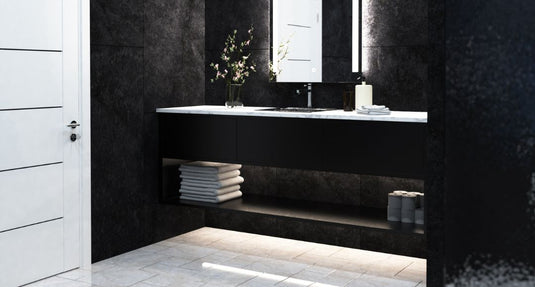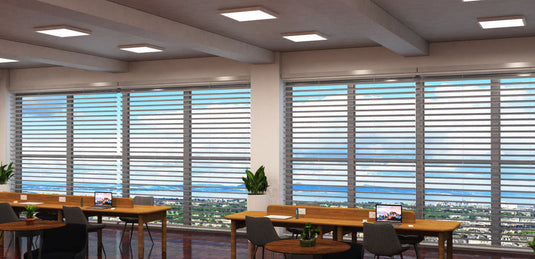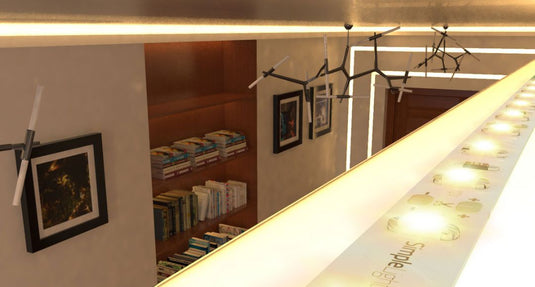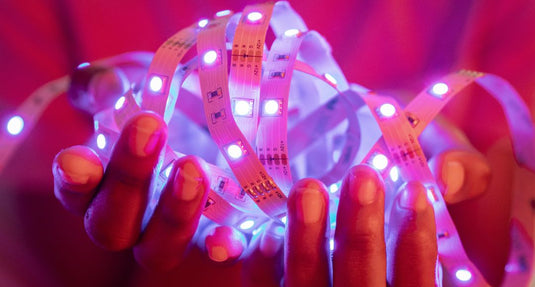LED plinth lights are tiny low-level lighting that illuminates the floor to enhance the safety and ambience of the space. It's a versatile lighting solution that you can incorporate into your kitchen and bathroom. Compared to its relatively small appearance, there are immense benefits that you can get from LED plinth lights. So, if you're curious about this fitting, here's a closer look at them!

Understanding LED Plinth Lights
As mentioned earlier, LED plinth lights are some of the smallest lighting fixtures you can find. They're mounted on kickboards, and they provide floor-level lighting. Plinth lights are typically seen in kitchens and bathrooms, providing a soft glow to boost the room's ambience and safety.
You may think there's not much variation with this lighting solution. However, it's quite the opposite! There are different variants of plinth lights, and if you don't have any prior knowledge, you might not get the one that's most appropriate for your space. Recessed, surface-mounted and colour-changing LED plinth lights are the most common, but that's just the tip of the iceberg! Plinth lights vary in finishes, shapes, sizes, colours, and more!
Assessing Lighting Needs in Your Kitchen or Bathroom
In any makeovers or building projects, you must assess the space before moving forward with the planning. How can you specify what needs to be done if you haven't fully grasped the area's requirements? So, before you look for plinth lights that fit the aesthetics you're after, here are a few things you should consider!
Identifying Lighting Goals
Why are you planning to install plinth lights? Is it for safety? Will you use it for night light? Do you want to add visual interest to your space? Knowing the goal for adding the fitting will allow you to find the one that meets your requirements.
Aside from that, consider the areas you want to illuminate. For the kitchen, you can add plinth lights on the kickboards of your lower cabinets and kitchen island. In the bathroom, you can incorporate plinth lights in the kickboard of your bathroom cabinets.
Determining Colour Temperature
Your choice of colour temperature will dictate the overall vibe of the space. Warm white light creates a cosy atmosphere, while natural and cool white light creates an attention-focused environment. Cool white and natural white are more fitting in the kitchen because they'll provide sufficient illumination in the busy space. As for the bathroom, warm white light can serve as ambient lighting while you relax in the tub and as night light, so you don't have to switch on the main lights when you visit in the middle of the night.
Choosing the Right LED Plinth Lights
Now that you've assessed the area and its needs, it's time to identify the LED plinth light you'll use. Here are some guidelines when choosing an LED plinth light!
Waterproof and IP Rating
If you're installing plinth lights in your bathroom or areas prone to moisture, you must ensure the plinth light has enough protection against them. The lighting fixtures in your living room may not all suit the bathroom, so be very careful. Remember, water and electricity do not make a great combination!
IP rating indicates the amount of protection a fixture has against solids and liquids. The higher the IP rating, the more protection it has. For the bathroom zone 2 and moisture-prone areas, an IP44-rated fixture is appropriate. However, when installing plinth lights near the shower area or the bathtub, you'll need an IP65 and up.
Energy Efficiency and Lumens
LED plinth lights are energy-efficient. They don't require that much power to produce sufficient illumination. It's best to stick with LED lighting solutions over traditional fixtures because they have high-quality brightness without forcing you to pay an expensive price.
Unlike incandescent bulbs, whose brightness corresponds to wattage, LED plinth lights measure their brilliance through lumens. The higher the lumens count, the brighter the light. When choosing the lumens of your plinth lights, consider the purpose of the fixture. If it's more for night and ambient lighting, you can do away with a lower lumens count. However, if you want to use it to improve the safety of the space and its functionality, consider getting a higher lumens count.
Colour Options and Effects
LED plinth lights don’t only come in single colours. There are colour-changing options that can diversify your lighting design. It’s perfect if you love hosting parties or if you like re-styling your home every season!
Considering Installation and Placement
You've already evaluated the space and know which fixtures to get. What you need to do now is consider the installation and placement of your plinth lights!
Recessed vs. Surface-Mounted Lights
With recessed plinth lights, you'll have to cut a hole into the surface where you'll install your fittings so they'll sit flush. Alternatively, surface-mounted plinth lights are placed on top of the surface. Choosing between the methods is based on your personal choice. However, if you have a narrow space, recessed lights are better.
Position for Optimal Lighting
Set your plinth lights in the centre of each cabinet door or drawer when positioning them. If the cabinets have different sizes, space your plinth lights 400mm to 500mm apart.
Conclusion
LED plinth lights can improve the ambience and increase the safety of your kitchen and bathroom. Aside from that, it's energy-efficient and long-lasting, so it will not make your electricity bill skyrocket even if you use it as a night light!
When purchasing your LED plinth lights, consider all the suggestions above to guarantee you'll have the fixtures that match your needs and preferences. If you don't know where to get your plinth lights, visit our website, LED Supplier! We have an extensive collection of LED plinth lights and other LED lighting solutions!




